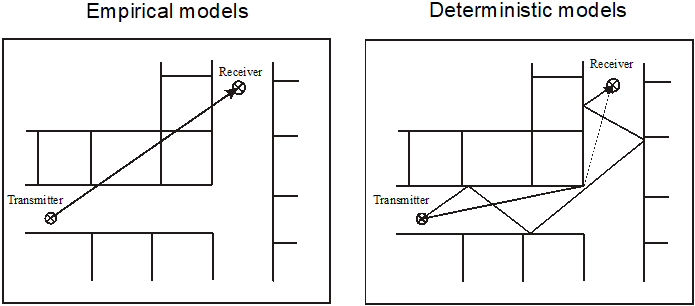Motivation for Indoor Propagation Models
Predicting the propagation characteristics between two antennas inside a building is important especially for the design of cordless telephones, wireless local area networks (WLAN), and in some cases, indoor cellular base stations.
The indoor propagation channel differs considerably from the outdoor one. The distance between transmitter and receiver is shorter due to high attenuation caused by internal walls and furniture and because of the typically lower transmitter power. The short distance implies a shorter delay of echoes and consequently lower delay spread. The temporal variations of the channel are slower compared to mobile antennas moving with a car. As is the case in outdoor systems, there are several important propagation parameters to be predicted. The path loss and the statistical characteristics of the received signal envelope are most important for coverage planning applications. The wide-band and time variation characteristics are essential for evaluation of the system performance.

Figure 1. Different approaches to the modeling of indoor propagation.
- empirical narrow-band models
- empirical wide-band models
- deterministic models
All of the presented models are based on or calibrated with propagation measurements. These measurements have mostly been carried out at 1800 MHz which is most appropriate considering the common indoor systems. The usage of the models at other frequency bands is possible when the material parameters of the propagation environment are known.